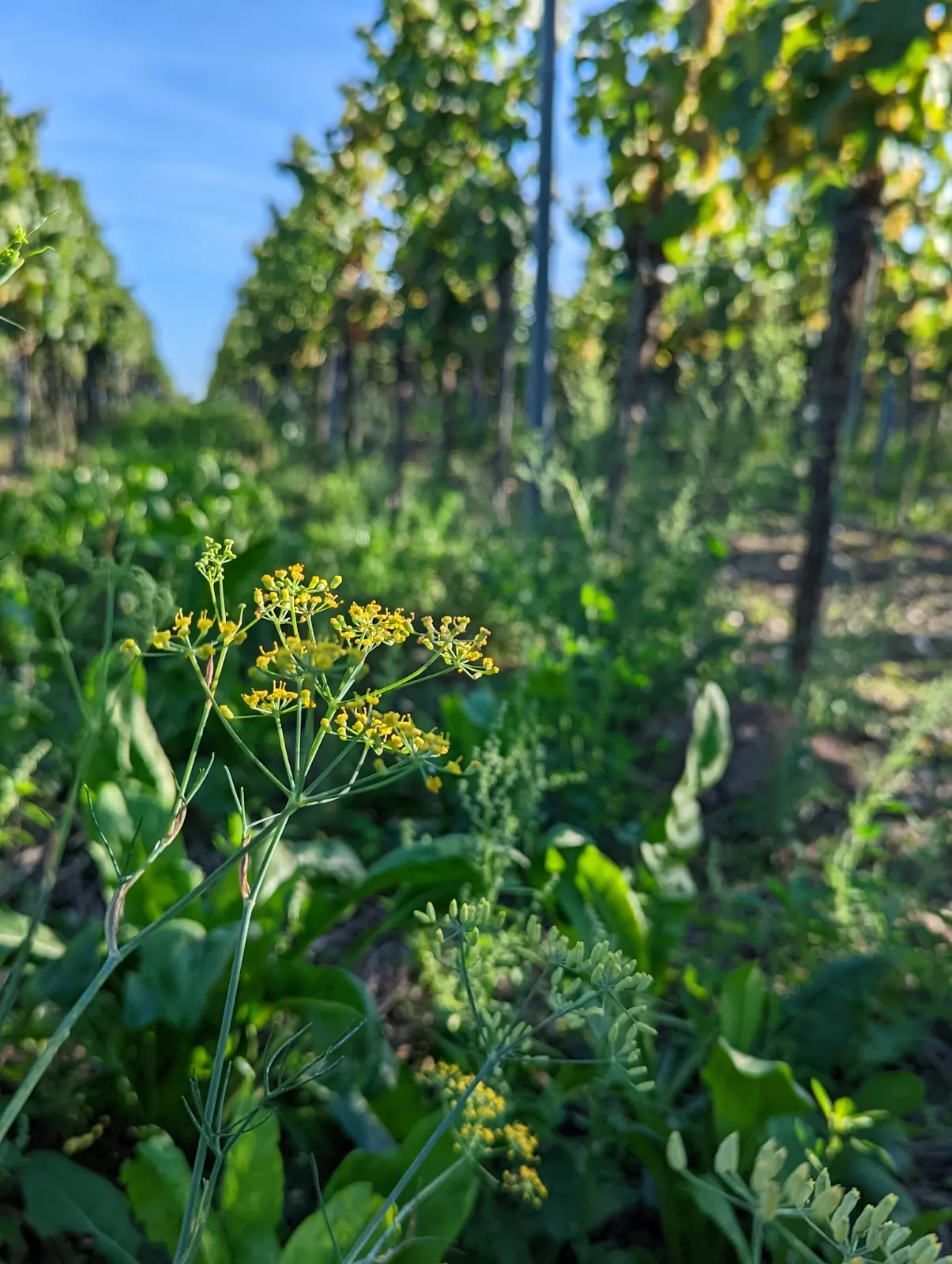- Wine Color/Type
- Top Occasions
- Unique Wines
- Surprise Me!
Tackling Vineyard Pest and Diseases: Organic vs. Conventional Approaches
The romance of wine is undoubtable, yet we are often unaware of the hardships producers face when growing the precious grapes. Pests and diseases pose significant challenges to vineyards, impacting the health of vines and potentially leading to substantial economic losses. In the battle against these threats, vineyard growers have various control measures at their disposal. This blog post will delve into the effectiveness of pest and disease control measures used by three different types of growers: conventional, organic, and biodynamic. It’ll be explored how each approach seeks to prevent, treat, and eradicate pests and diseases, focusing on the most common global threats.
Yarrow flowers as fertilizer in an organic vineyard (Credit: Photo by Jens Meyers on Unsplash)
Let VinoVoss Guide Your Biodynamic and Organic Wine Journey!
At VinoVoss, we’re dedicated to helping you discover the perfect biodynamic and organic wines that suit your unique taste. Whether you’re commemorating a special moment or simply seeking a wine that aligns with your sustainable values, the world of biodynamic and organic wines has a delightful surprise waiting for you. Raise your glass, toast to conscious exploration, and embark on a journey through the wonderful realm of biodynamic and organic wines with VinoVoss! Click here to find exceptional organic and biodynamic wines with VinoVoss.
Fungal Diseases: The Battle with Mildew
Mildews are notorious fungal diseases, causing substantial damage in vineyards worldwide. The main types of vineyard mildews are powdery and downy mildew. To combat their spread, all growers can take preventive measures like maintaining open canopies to enhance air and moisture circulation. Additionally, wettable sulfur or sulphur dust, as well as the Bordeaux mixture, are commonly used treatments for each of the mildews respectively. In addition, conventional growers can also use synthetic fungicides, which are not allowed in organic and biodynamic farming.
Effective treatment after a mildew outbreak can be challenging, especially for larger areas. While natural treatments allowed under biodynamic certification may be effective for localized cases, chemical sprays may be necessary for severe outbreaks.
The Battle with Bacterial and Viral Diseases
Bacterial phytoplasma Flavescence Doree and viral Pierce’s disease present significant challenges as they have no effective cure. To control their spread, targeting the leafhoppers that act as vectors is crucial. Conventional growers often resort to synthetic insecticide sprays, while natural plant-derived Pyrethrum is a contact insecticide allowed for use by biodynamic growers. However, synthetic sprays demonstrated higher effectiveness in studies, though they are not permitted under organic or biodynamic treatments.
In Napa, the successful eradication of European grapevine moths was achieved through systematic trap use and quarantines, showcasing that pests can be tackled without relying solely on sprays. Traps and parasitic wasps have proven successful tools for biodynamic and organic producers, who take a more preventative approach through biodiversity promotion.
The Mite Menace: Organic Solutions
Mites are a common insect pest, particularly in regions with heavier pesticide use. Organic and biodynamic vineyards, with their focus on biodiversity, are less likely to face mite problems as they encourage natural predators for mites. UC Davis studies have shown that Stylet oil is an effective organic management approach for mites, while also reducing the incidence of mildew and leafhoppers.
Cover crops in Cambria Winery, Santa Maria, California
(Credit: Photo by Tim Mossholder on Unsplash)
The Key Takeaway
Organic and biodynamic approaches emphasize a preventative rather than reactive strategy, aiming to build vineyard “immune systems” through biodiversity promotion. While conventional methods may demonstrate higher short-term effectiveness, the long-term sustainability and resistance to disease in organic and biodynamic vineyards make them formidable alternatives.
In conclusion, vineyard growers have various tools at their disposal to combat pests and diseases, each with its own strengths and limitations. Organic and biodynamic viticulture can effectively reduce and manage pests and diseases while promoting the overall health of the vineyard ecosystem. Understanding these different approaches empowers growers to make informed decisions that align with their sustainability goals and long-term vineyard health.
Cheers!
by Lotte Gabrovits, LG
Latest articles


